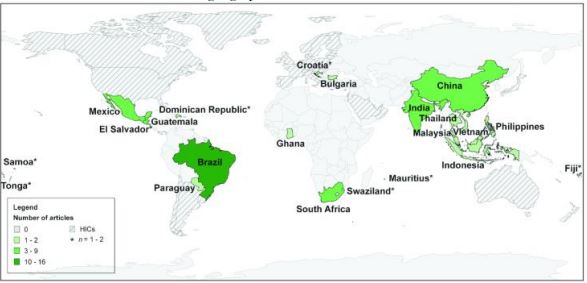Assessing Food Environments in Economically Developing Nations: A Comprehensive Study of a Peri-Urban District in Pakistan and Implications for Global Nutrition Initiatives
Keywords:
Food Environments, Undernutrition, Village Market, Packaged Goods Brands, Economically Developing Nations.Abstract
The study addresses the growing significance of food environment research in Economically Developing Nations within the framework of the UN Decade of Action on Nutrition 2016–2025. Policymakers are increasingly focusing on the impact of food environments on diets, nutrition, and health, particularly considering the dual challenge of malnutrition. The concept of food environments encompasses external factors like food availability, pricing, vendor characteristics, and regulations, as well as individual-level factors such as accessibility, affordability, convenience, and desirability. The study explores the nutrition transition, characterized by shifts in diets and nutritional statuses influenced by globalization, urbanization, and economic expansion. The emergence of the "Double Burden of Malnutrition" highlights the challenges posed by increased malnutrition types. In South Asia, including Pakistan, the prevalence of this double burden has risen, further exacerbated by the ongoing COVID-19 pandemic. The study underscores the need to comprehend food environments to address malnutrition effectively. Despite modest progress in achieving Sustainable Development Goal. The study focuses on a peri-urban district in Pakistan, aiming to devise a survey instrument to evaluate the retail food environment comprehensively. It scrutinizes the availability, accessibility, and marketing approaches of food establishments categorized by village size (small, medium, and large) to uncover potential disparities and patterns. The research methodology includes a systematic scoping review and data collection from six electronic databases, covering 115 economically developing nations. Original peer-reviewed articles meeting inclusion criteria provide insights into the diverse economic contexts of food environments. The study delineates the key concepts, domains, and dimensions explored in these articles, emphasizing the predominance of the external food environment domain in research. A majority of studies adopt quantitative methods, with a focus on cross-sectional designs. In analyzing packaged goods brands, the study finds a prevalence of sugary drinks in village restaurants, with variations based on village size. Notable findings include positive correlations between fruit diversity and village size, suggesting potential pandemic-related disruptions in larger villages. The study underscores the importance of assessing village market access for a comprehensive understanding of the food supply chain. The findings contribute to the limited literature on external food settings in South Asia and highlight the need for inclusive measures for assessing external food environments. The study concludes by emphasizing the vital role of informal food sectors in reshaping food distribution and calls for regulatory measures to address the prevalence of unhealthy foods. It serves as a foundational resource for studying food environments in nearby nations, providing valuable insights for policymakers, researchers, and practitioners.


















